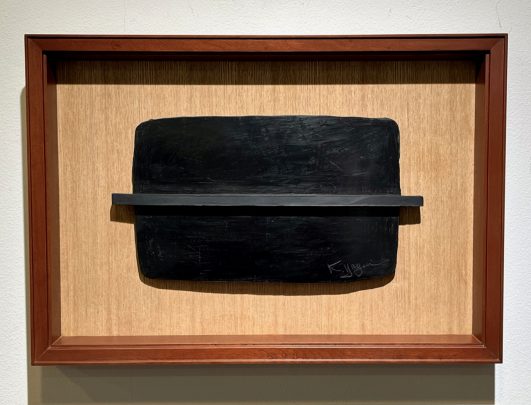八木一夫 YAGI Kazuo 1918–1979
1918(大正7)年京都に生まれる。父は大正時代に革新的な陶芸家集団 赤土社を結成した八木一艸。1937(昭和12)年京都市立美術工芸学校(現・京都市立銅駝美術工芸高校)彫刻科卒業後、東京美術学校教授などを歴任しパリの国立セーブル製陶所にも留学した沼田一雅に師事、陶彫を学ぶ。また、沼田が若い陶芸家と共に結成した日本陶彫協会に参加した。1946(昭和21)年青年作陶家集団を結成して新しい陶芸を目指したが、2年後に発展的に解消し、鈴木治、山田光らと前衛陶芸家集団 走泥社を結成した。1954年に発表した《ザムザ氏の散歩》で土による新たなる造形の可能性を示し、陶芸家のみならず美術家にも注目され、高い評価を得た。1979(昭和54)年京都で亡くなる。
<「あの時みんな熱かった!アンフォルメルと日本の美術」展(2016年、京都国立近代美術館)図録より引用>
Kazuo Yagi (八木 一夫, Yagi Kazuo, 1918–1979) was a Japanese potter and ceramic artist best known for spearheading the introduction of nonfunctional ceramic vessels to the Japanese pottery world. With an innovative ceramicist as his father, Yagi was sent to art school to study sculpture, instead of pottery. After graduating in 1937, he continued to train in the progressive circles, such as the National Ceramic Research Institute and the Japan Ceramic Sculpture Association. Following a short period of military service in 1939 and through the early postwar years, he was involved in a series of collectives that sought to transcend the traditional aesthetic values in not just ceramics but also in a range of visual media.
It was not until 1948 that Yagi established his own ceramics collective, Sōdeisha, a group which rejected extant models of pottery and deliberately sought to blur the line between pottery and sculpture. Inspired in part by Isamu Noguchi’s work in Japan in the early 1950s, which used ceramic materials to create modern abstract forms, Yagi and other members debuted so-called obuje-yaki ("kiln-fired objet "), or pottery with no functional purpose. The introduction of obuje-yaki was considered extremely radical at the time, because it questioned the very basis of ceramic objects. Yagi also introduced other experimental ceramic methods later in his career, such as burnishing his pottery objects black (so-called kokutō).
Through his ceramic works, Yagi questioned the boundary between pottery and sculpture. However, his steadfast dedication to ceramics ultimately resulted in the nonfunctional ceramic vessel becoming an accepted type within Japanese pottery practice today. His legacy was felt through Sōdeisha, which continued even after his death, and his teaching at Kyoto City University of Arts.
< from Wikipedia>




